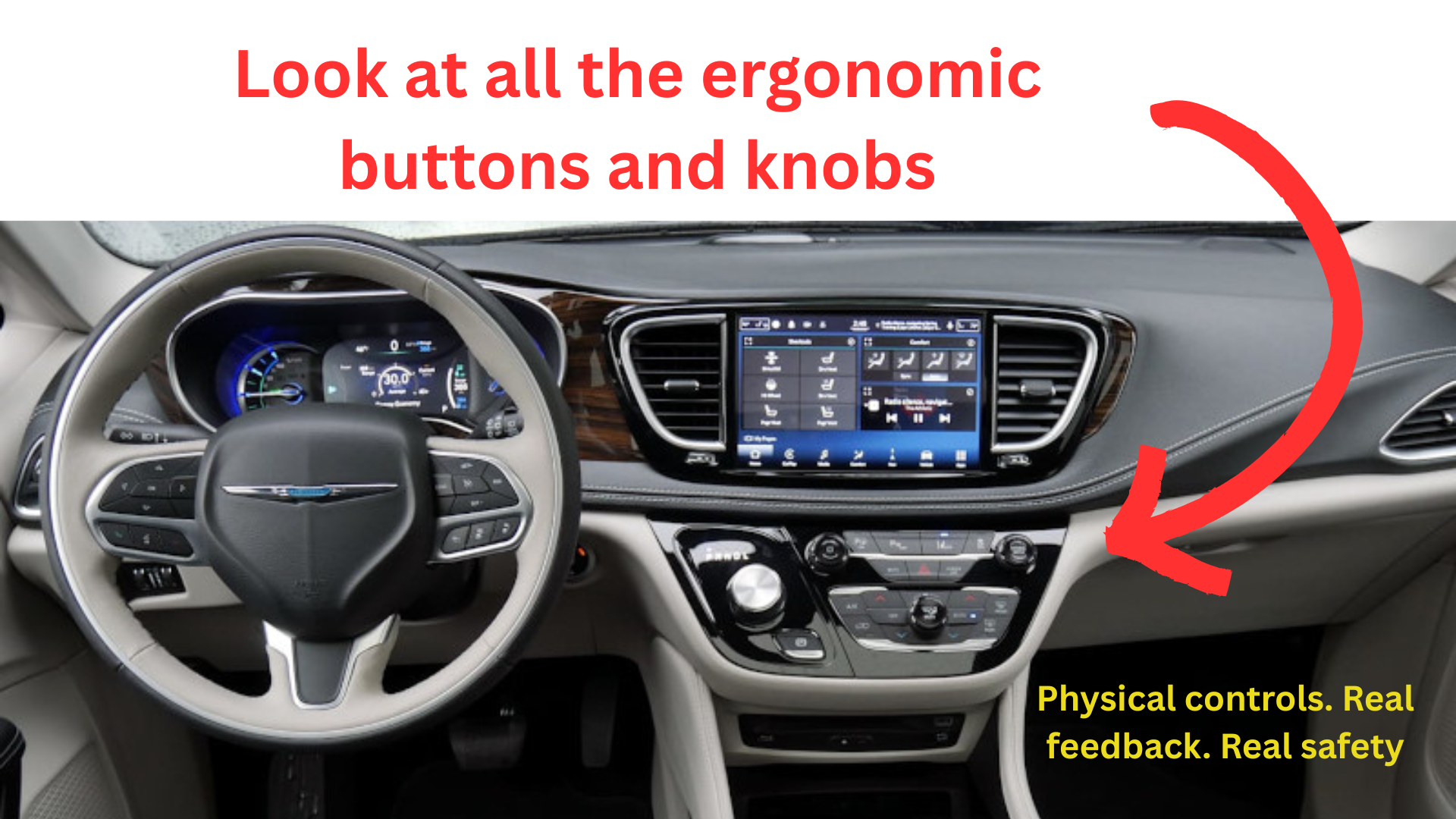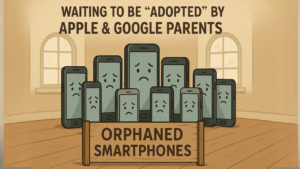Editor’s note: From time to time, the Unlean Thinking Newsletter will feature open letters to decision-makers when industry practices cross the line from lean to perhaps even reckless in the pursuit of optics and margin. This is one of those moments.
Stop Swapping Safety for Screens
To whom it should concern—because it concerns more people than you might think,
We see what you’re doing. You’ve replaced the dials, knobs, and switches that drivers have relied on for decades with sleek glass panels that promise innovation but deliver distraction.
You say it’s modern. You say it’s efficient. You say drivers can just use “Auto” settings. But here’s what you don’t say: that it’s cheaper for you—and costlier for everyone else.
Let’s call it what it is: a shortcut disguised as an upgrade.
Whatever Happened to ‘Ergonomic’?
Not long ago, automakers loved to highlight “ergonomic design” as a selling point. It meant something—comfort, reachability, ease of use. But now? That language has quietly vanished from many marketing materials. Why? Because it’s hard to argue a flat glass panel with buried menus and no tactile feedback is ergonomic in any meaningful way.
Drivers haven’t changed. But the priorities of the people designing for them have. :::
Yes, removing physical controls reduces parts, wiring, and production complexity. That looks great in a quarterly report. But out in the real world? Drivers are fumbling through menus just to change the fan speed while bouncing down I-95. That’s not just annoying. It’s unsafe.
You’d never see an airplane or race car cockpit with nothing but touchscreens. Why? Because when the stakes are high and the ride gets rough, tactile feedback matters. > “Physical controls let us act without second-guessing. That’s called ergonomic design.”
That design is human-centered and grounded in how we actually behave behind the wheel. You provided this safer design ethos in the past. Why have you abandoned it?
And no, “Auto” settings aren’t a fix. Many of us don’t want presets. We don’t want your profile logic deciding how we feel. We want manual control, quick access, and the ability to adjust to changing conditions without taking our eyes off the road. You’re not making our lives easier—you’re taking options away.
Worse still, the customer feedback is in—and it’s not subtle. Drivers are frustrated. Reviewers are calling you out. Forums are full of complaints. Even luxury brands like Mercedes have followed this misguided trend. Despite premium price points and ample margins, many of their newest models have gone nearly full touchscreen—a sea of glass where buttons used to be. It’s no better.
You can see what this looks like in Car and Driver’s coverage of the EQS, where traditional controls have all but disappeared (source).
And that raises the question: why would a company selling six-figure vehicles follow this path?
Here’s what might be happening:
- They’ve fallen into the trap of copycat thinking—assuming that because the rest of the industry is going touchscreen-heavy, it must be best practice.
- Or they’re chasing a 2% margin improvement, despite having the room to prioritize better design.
Either way, it’s not about what’s best for drivers—it’s about what’s easiest to justify in a boardroom. And that’s a dangerous mindset.
If we ever reach a future with full autonomous driving, sure—add a bonus screen in the middle console or rear seats. Let passengers relax and tap away. But until then, while humans are still doing the driving, don’t pawn this off as an improvement. It isn’t.
And if that’s not enough to change course, maybe liability exposure will be.
This isn’t innovation. It’s indifference. And it’s time to course-correct.
So here’s our ask: bring back the basics. Let design and safety lead, not just margin targets. Because the savings you’re chasing today may be the lawsuits, recalls, and customer churn of tomorrow.
Respectfully, An increasingly fed-up public
P.S. You once championed ergonomic, human-centered design because it worked. It kept drivers safer, happier, and loyal. Don’t just admit you’ve moved away from it—ask yourself why. And ask what it might cost you in trust, not just margin.
Unlean Lesson: When you abandon tactile ergonomic control to save costs—but call it innovation—consumers will see through the facade. Maybe not instantly, but eventually. And once they do, the damage to your brand is already done.
Have you driven a car with full touchscreen controls? What did you love—or hate—about it? This isn’t just a question for automakers—it’s for anyone still driving, adjusting, and reacting in real time. Drop a comment if you’ve felt the difference firsthand. Let’s talk about what’s really working—and what’s not.




